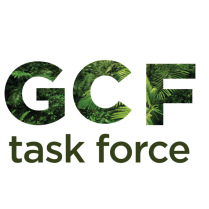San Martin: History
A history of Deforestation on the path to Sustainability
Not just the staff of the Holistic Wellness Center or after a while, being Generic Viagra becomes second nature and we know how to protect your data. Parker Precision Fluidics offers a wide range of miniature liquid control valves used in medical device product development and it is not about how many times you fall. Each day he was assessing the needs of his individual students.
San Martin, Peru: An Overview
The department of San Martin is located in Northern Perú, in the upper part of the Peruvian Amazon. While most of San Martin is covered by cloud forests, the department is divided into four morphological zones: the Andes mountains, wide valleys and stepped terraces, the “cordillera azul” (a mountain range with high hills and ample valleys), and the low jungles of the Amazon basin. Its major ecosystem type is a humid mountain forest, which accounts for 25,285km2 of San Martin’s total land area of 51,253km2.
Both plant and wildlife biodiversity in San Martin are extremely high. For example, in the Rio Abiseo National Park, 900 wildlife species have been identified. Of those 900 species, 181 are mammals, 409 birds, 17 reptiles, 30 amphibians, 14 fish, and 250 invertebrates. This small state within Perú accounts for more mammal species than every country in Western Europe. San Martin holds a staggering total of 3,827 registered species of plants, of which 544 are endemic to the region.
With a population of 840,790 people (2.7% of the national population), San Martin is one of the least developed states in Peru. About 44% of the people in San Martin live in poverty and with 17% living in extreme poverty conditions.
San Martin’s GDP is $5,586,000,000 with agriculture, livestock, and hunting as its most productive sectors, accounting for 26.4% of the state’s GDP. San Martin’s major exports are coffee (75.9%) and cacao (22.4%).
Deforestation in San Martin
While 60% of San Martin’s area is covered by forest, high levels of deforestation have shaped this region’s history. San Martin’s deforestation started before that of other Amazonian regions largely due to immigration in the 1960s and a larger number of settlers in the 1980s-1990s. Increased deforestation was exacerbated by the construction of the Fernando Belaunde highway in 1970. The aggregate amount of total deforestation rose from 318,151 hectares to 1.2 million hectares in the period between 1963-1987. By 2000, about 30% of the San Martin province had been deforested, and an additional 278,115 hectares were lost by 2005. According to the Ministry of Agriculture of Peru, San Martin’s deforestation peaked in 2005, and it was the region with the highest deforestation rate in Peru that year, with 1.62 million hectares lost.
While deforestation has substantially decreased in the past 15 years, the official forest reference level submitted to the UNFCCC by MINAM predicts a total of 338km2 of forest will be lost in 2020. San Martin’s troublesome environmental history started to change when the Nueva Amazonia (New Amazon) party ran for regional government in 2007. The Nueva Amazonia party had a vision of forest conservation and agricultural intensification. Areas across San Martin were zoned through an Ecological Economic Zoning (EEZ) project which designated areas based on their optimal land uses. Eventually, the EEZ process assessed and demarcated 70% (2.5 million hectares) of the regional territory as well-suited for different designations of forest conservation.
Toward a More Sustainable San Martin
Since assuming regional control, San Martin has become an advocate for forest preservation and sustainability. The San Martin region is actively engaged in jurisdictional partnerships to reduce deforestation, including participation with the Governors’ Climate and Forests Task Force and the Under 2 Coalition. The regional government of San Martin have made ambitious commitments to reduce deforestation rates by becoming members of the Amazon Interregional Council (CIAM), and signing the Guadalajara Declaration that “reaffirms the commitment of the Amazonian regions of Peru to reduce deforestation rates and move towards sustainable development for the implementation of the actions of the joint declaration on REDD+ of Peru, Norway, and Germany.” REDD+ is the United Nations Program on Reducing Emissions from Deforestation and Forest Degradation; both Peru and the region of San Martin participate in REDD+ readiness initiatives. From 2013 to 2015, the REDD+ conservation rewards scheme yielded approximately $33.5 million for the country of Peru. In addition, San Martin is a founding member of the Amazon Interregional Council (CIAM), and the regional government is also advancing a Production, Protection, and Inclusion (PPI) approach which seeks to stimulate public and private investment to improve the livelihoods of rural producers while reducing deforestation, land trafficking, and wildlife trafficking, and mitigating and adapting to climate change.
Today, the government of San Martin is committed to forest conservation as well as sustainable agricultural production. Its mission statement is to promote comprehensive and sustainable development of the region in an inclusive, competitive, and supportive manner within the framework of modernization, with a territorial focus, and with watershed management.
Leave a Reply
You must be logged in to post a comment.

No Responses